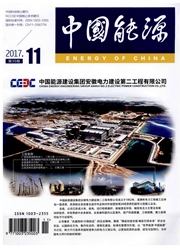

 中文摘要:
中文摘要:
CO2排放量可认为是社会、经济、自然等多种宏观驱动因素共同作用的结果。基于此,本文通过采集1952~2006年期间我国CO2排放量相关的36个指标,用经典偏最小二乘模型(PLS)对它们的重要性进行辨识。结果表明:重要的宏观驱动因素是总人口量、城市人口率、GDP及人类生产生活等活动强度较大的指标(如财政收入与投资、运输与邮电、医疗卫生及文化教育),不重要的宏观驱动因素则为人类活动强度较弱的指标(如农村人口、艺术表演水平和金融外贸活动)或自然环境条件等。据此,提出了几点有利于低碳将来的对策建议。
 英文摘要:
英文摘要:
CO2 emissions can be regarded as the result of various macro-driving factors' common action from the social,economic and natural field.Based on this,36 indicators associated with CO2 emissions in 1952~2006 are collected,and classic Partial Least Squares(PLS) model is used to identify their importance in this paper.The results show: the main macro-driving factors of China's carbon emissions come from the amount of total population and percentage of urban population,GDP and indicators of human life and production activities' intensity(such as fiscal revenue and investment,transport and telecommunications,health and education industry),the unimportant macro-driving factors come from the indicators of less intensity of human activities(such as rural population,artistic performances,finance and foreign trade industry) or natural environmental factors.Based on the mentioned-above results,the paper puts forward some reasonable suggestions on carbon emission reduction or low-carbon's future.
 同期刊论文项目
同期刊论文项目
 同项目期刊论文
同项目期刊论文
 Optimal acquisition strategy for China';s strategic petroleum reserve: A cost estimation study throu
Optimal acquisition strategy for China';s strategic petroleum reserve: A cost estimation study throu Analysis of Global CCS Technology, Regulations and Its Potential for Emission Reduction with Focus o
Analysis of Global CCS Technology, Regulations and Its Potential for Emission Reduction with Focus o Does generation form influence environmental efficiency performance? An analysis of China';s power s
Does generation form influence environmental efficiency performance? An analysis of China';s power s System Analysis Approach for Identification of the Factors Driving Crude Oil Prices after the Global
System Analysis Approach for Identification of the Factors Driving Crude Oil Prices after the Global 期刊信息
期刊信息
